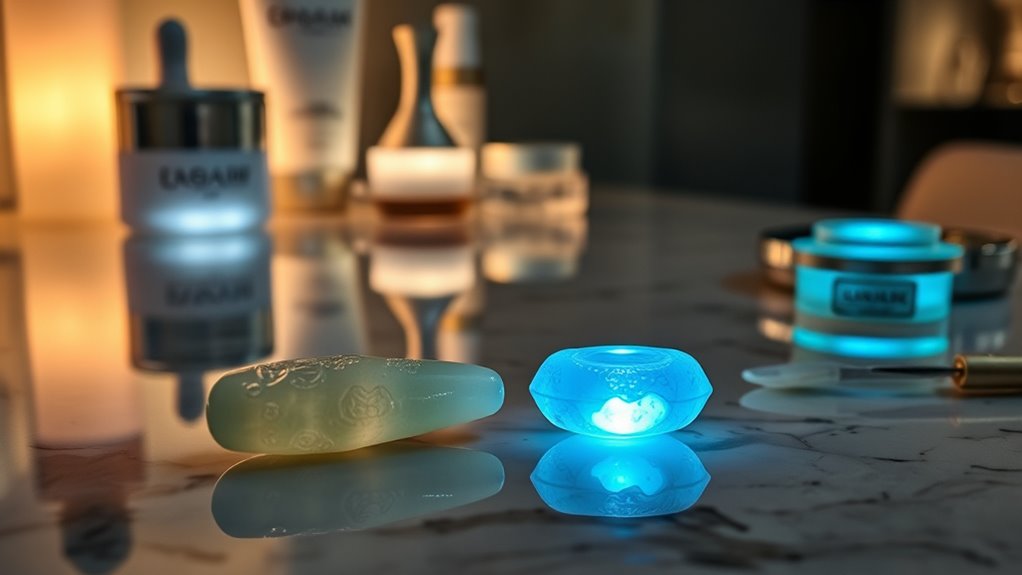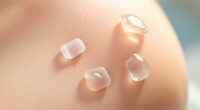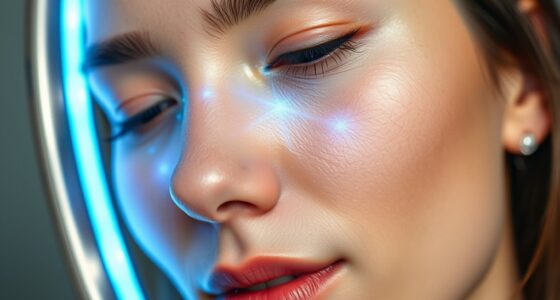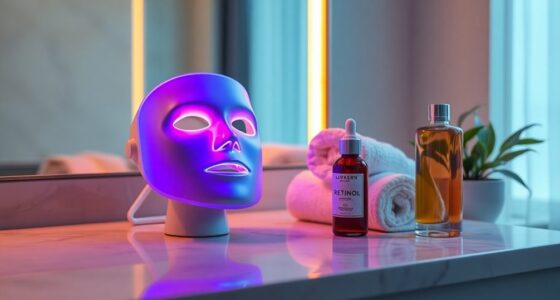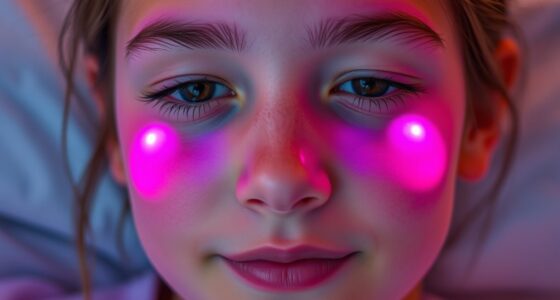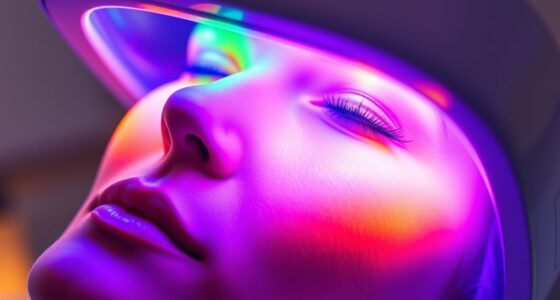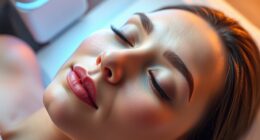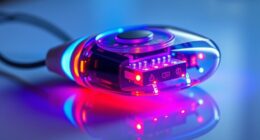To get the best results, do Gua Sha before LED therapy. Gua Sha warms up and relaxes your skin, promotes blood flow, and helps skincare products absorb better. When you perform Gua Sha first, your skin is prepped for LED light, boosting its penetration and effectiveness. Reversing the order isn’t recommended because it can cause sensitivity or disturb the treatment. Want to discover more tips? Keep exploring how to optimize your skincare routine.
Key Takeaways
- Gua Sha should be performed before LED therapy to stimulate and warm the skin, enhancing light penetration.
- Applying Gua Sha first helps release muscle tension and promotes blood flow, preparing the skin for LED treatment.
- Conducting LED therapy before Gua Sha may cause skin sensitivity and reduce massage effectiveness.
- The optimal sequence is Gua Sha first, then LED therapy, to maximize skincare benefits and treatment results.
- Timing-wise, perform Gua Sha prior to applying serums and before LED sessions for best absorption and rejuvenation.

LED therapy and Gua Sha are popular skincare techniques that can enhance your skin’s health and appearance. If you’re trying to decide which to do first, understanding how they work together is key. Both methods target different skin concerns and can complement each other when used correctly. Generally, it’s best to start with Gua Sha before LED therapy, but your specific skin needs and routine matter too.
Gua Sha involves using a smooth-edged tool to massage your face, promoting blood flow, lymphatic drainage, and releasing muscle tension. When you do Gua Sha first, you physically stimulate your skin, helping to loosen tight muscles and improve circulation. This process can also help your skin absorb skincare products more effectively. Think of Gua Sha as a way to prep your skin, making it more receptive to subsequent treatments.
Once you’ve finished Gua Sha, follow up with LED therapy. LED treatments use specific wavelengths of light to target various skin concerns, such as acne, inflammation, fine lines, or dullness. Since your skin is already warmed up and stimulated by Gua Sha, the light can penetrate more deeply and work more efficiently. This sequence maximizes the benefits of both treatments—Gua Sha primes your skin, and LED enhances cellular activity, leading to improved skin tone and texture.
It’s important to note that doing LED therapy before Gua Sha isn’t typically recommended. If you start with LED, your skin might be slightly heated or sensitive, making the massage less comfortable and less effective. Plus, Gua Sha after LED could potentially disturb the results, especially if your skin is still sensitive from the light therapy. Therefore, the logical order is to do Gua Sha first, then follow with LED.
Timing also plays a role. Many skincare professionals suggest performing Gua Sha as part of your routine before applying serums or moisturizers, which can then be absorbed more easily after the massage. Afterward, LED therapy can be done to boost skin healing and rejuvenation, ideally with clean, dry skin to maximize light absorption.
Frequently Asked Questions
Can LED Therapy Replace Gua Sha Entirely?
LED therapy can’t fully replace Gua Sha because they serve different purposes. LED boosts skin healing and reduces inflammation, while Gua Sha improves circulation and lymphatic drainage. You might combine both for better results, but relying solely on LED won’t give you the same benefits as Gua Sha. To maximize your skincare, consider using them together or choosing the one best suited for your specific needs.
Are There Skin Types That Shouldn’t Use Gua Sha?
You should avoid using Gua Sha if you have active acne, rosacea, eczema, or psoriasis, as it can aggravate these skin conditions. People with very sensitive skin or broken capillaries should also skip Gua Sha to prevent irritation or damage. Always do a patch test first, and consult a dermatologist if you’re unsure about your skin’s compatibility. Proper technique and skin assessment are key to safe Gua Sha use.
How Long Should I Wait Between LED Sessions and Gua Sha?
You should wait at least 24 to 48 hours between LED sessions and Gua Sha treatments to maximize benefits and avoid overstressing your skin. Pushing them closer together can diminish results or cause irritation, like overloading your skin’s energy systems. Giving your skin this break allows it to recover, rejuvenate, and respond ideally to each treatment. Listen to your skin’s signals and adjust timing accordingly for the best results.
Is It Safe to Combine LED and Gua Sha Daily?
It’s generally not safe to combine LED and Gua Sha daily because both treatments can cause skin irritation or sensitivity if overdone. You should give your skin time to recover between sessions, typically at least 24-48 hours. If you’re considering frequent treatments, consult a dermatologist or skincare professional to guarantee you’re not damaging your skin. Prioritize gentle routines and listen to your skin’s response to avoid adverse effects.
Which Treatment Is Better for Deep Skin Rejuvenation?
For deep skin rejuvenation, LED therapy is more effective because it stimulates cellular activity and collagen production from within, targeting deeper layers of your skin. Gua Sha enhances circulation and lymphatic drainage but mainly affects surface layers. To maximize results, consider using LED treatments first to activate your skin’s regenerative processes, followed by Gua Sha to improve absorption and promote a healthy glow.
Conclusion
So, which should you try first—LED or Gua Sha? The answer isn’t set in stone. It depends on your goals, skin type, and how your skin reacts. Will you start with the calming glow of LED or the sculpting pressure of Gua Sha? Or maybe, just maybe, combining them could release even better results. The choice is yours, but remember—your skin’s story is still unfolding. What’s next? Only time will tell.
